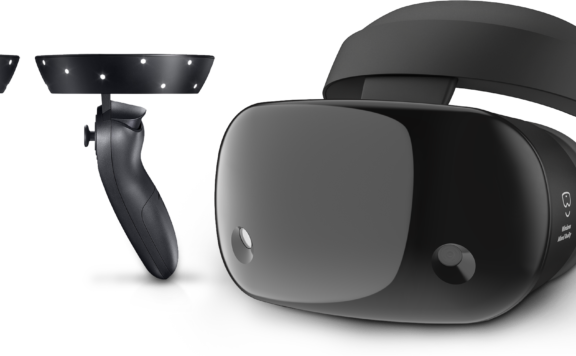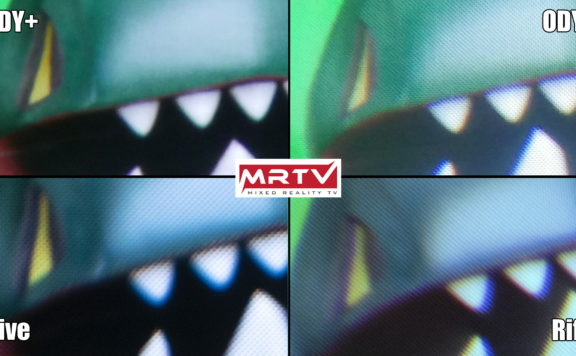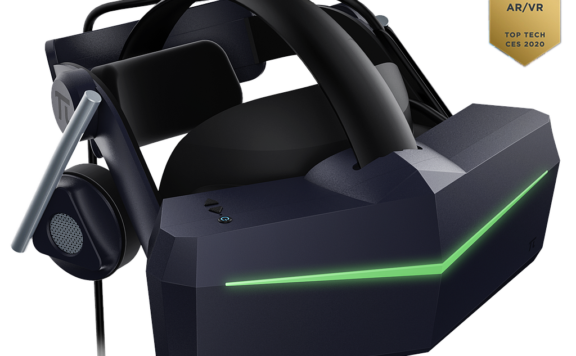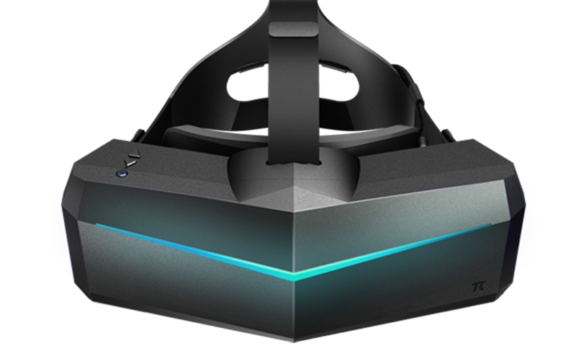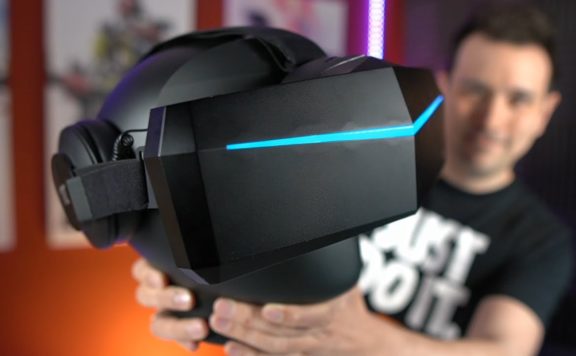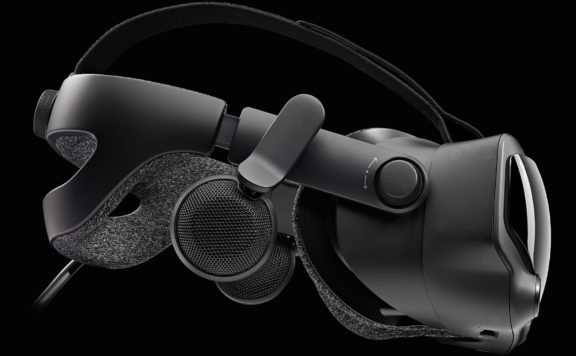Let’s start by seperating the review in two points, which in my opinion are very different for this device: hardware and software.
A bit of background: I got into VR in October of 2017 with the Release of the WMR devices, the Lenovo Explorer to be exact. I had it for about one or two months with major technical issues, like flawed tracking, flickering screen, controllers not connecting, no Steam etc. All of the issues are fixed at this point in time, but in January of 2018 I finally decided to drop WMR for another VR headset. I was looking into the Vive and Rift, and was willing to pay the premium price of the Vive, if neccessary. I chose the Rift. So my two major comparisons for devices are the Vive and the Lenovo Exploer.
Hardware
Unboxing
When you go into the store and buy the RIft, I would say that the Rift package is the most appealing and also most rewarding when you first open it. All elemets are niceley sorted symmetrically in the box, and you directly get this more premium feeling, especially when compoared to the Explorer.
HMD
In terms of outward appearance of the device itself, I also think that the Rift is the sleakest of all. The IR LEDs are integrated in the body invisibly, so you get a vey clean black look, with clothing materials used on the side and a matt polycarbonate front, with just a subtle oculus branding in a reflecting black. No weird curves, no weird eyes, just a very clean premium look right out of the box.
The story continues with the headstrap, which in itself is made out of a non-flexible material. You can widen it by using the valcrow strips on the side, which feels very natural compared to the more difficult setup on the Vives side. To put the headset on, you can just pull back the non-flexible part about four centimeters. This eliminates the need for having to adjust the headset everytime again, and in fact, I think I only adjusted it about ten times in total.
The pre-mounted headphones provide a surprisingly clear sound, and not having to plug in your headset everytime you want to jump into VR is a real reliever. That however is no excuse for no headphone jack on the Rift itself. While you can detach the integrated headphones, you will have to rely on external wiring all the way up to your PC, which basically means you will be unable to use your own headset. And how much I try to appreciate the integrated headphones, for games like Beat Saber I whish I could use my own Headphones and would have preferred a headphone jack over an integrated solution.
I myself prefer the scuba mask style devices over the PSVR style. So this might be just me, but I find the Oculus being the most comfortable Headset out there. The wheight is very well distributed over the full head and you can easily wear it for a few hours.
The only thing I didn’t like in terms of comfort was the foam on between your face and the HMD. It is attached with valcrow, so you it can be exchanged, but it stuck to the stock one. It is not fluffy enough for you not to feel it, and it sucks up sweat like a sponge (which it basically is). Expert tip: don’t take your headset off in Beat Saber if you want to play afterwareds, this eliminates the cold, disgusting feel when putting the headset on again.
Ok, for screen quality a quick disclaimer: I have an IPD which is just about the maximum the Oculus can do and well over what the Lenovo provides.
As I said, my Lenovo Explorer had many flaws, and I didn’t want to make a mistake again when buying a VR headset. So I tried out bot the Vive and the Rift for about the same time. My first impression with both devices was, that you don’t notice the difference in resolution when you don’t have a direct comparison. So both Rift and Vive are way above the Lenovo. Especially that you can see the full sceen and don’t have rounded corners really makes a difference. When comparing Rift and Vive, I liked the Oculus better, as you have less space inbetween the pixels, thus having less of a screen door effect. Also the Rift is better in color reproduction. Generally I am very pleased with the quality the Rift provides, and while the WMR devices on paper look better, I actually preferred the Rift over all other headset, but the future will show how it will keep up.
Controllers
The Rift controllers are without a doubt the best controllers you can get right now. They have an ergonomic fit, three capacitive sensitive buttons, an analog trigger and grab button, a capacitive sensitive thumbsticks as well as a capacitive thumb rest spot.
They are light and the batteries, of which you only have one AA per controller, last forever, I would say at least 10h but many people also report ~40h.
It’s a bit unfortunate that they don’t come with rechargable batteries, but the ones you can buy in stores are working without any issues. I have two 1.2V 2500mAh NiMH with another two fully charged at the back to swap them if one gets low. Swapping them is incredibly easy, as the battery try openes up with a magnet, so you just make a gentle slide downwards and the cover comes of. Even the cover feels very solid built, so I would think that it will last for a long time.
The tracking ring never comes in the way while still providing a very solid coverage of tracking area.
One of the buttons deserves it’s own paragraph. The grab button is unique under all the controller out there. It only has a very slight resistance and is analog. You can easily hold it down without much strength, which in its own is a killer feature over the other controllers. It’s just something completeley different when you grab to grab and let lose to let lose.
The straps on the controllers are pretty much what you find on you wii back then, you can detach them if you really want, and the provide sufficient protection from unwanted throwing.
Sensors/Base Stations
This is the part where it gets tricky to love the Rift. The standard package comes with two sensors included for setting up a front facing 180° VR setup.
No doupt, they look very solid and well manufactured, but each of them has to connect to its own USB (3.0) Port. They also work with 2.0 (I had one operating at 2.0 speed most of the time).
They also only have a very limited line of sight when set up as recommended. If you want to be able to ly down in game, you have to set them up at different heights, and when you want 360° roomscale it gets even worse.
Software
Tracking
Setting up the tracking is very easy when you got some elevated spots somewhere. The software is very forgiving with distance and height difference.
For the most part the tracking is very relying, however I had some major failures back when my CPU couldn’t hold up.
The headset gets tracked in every setup in every rotation and has no issues
The controllers are very well tracked and on pair with the Vive, however they are off by about 1/2cm. They also might lose tracking when doing very fast moves like in Beat Saber. But that’s on a very competetive level.
Overall you get a very solid tracking with the controllers in my experience. I had some regular game breaking failures in Beat Saber, but I am playing on a VERY high level, so nothing really to worry about.
Oculus Home 1.0
A cool home with some customization features and basic game launching features.
Oculus Home 2.0 Beta
That’s. How. It. Should. Be.
No really, the amout of dedication in there is a whole new level. Did you see the WMR pinning apps features? They are bullshit compared to the Oculus Dash. Take any Window of any application an pin it to anywhere, take a screen and pin it, and interact with it by TOUCHING IT.
And that’s on of the biggest points with Oculus. The software feels great, because you don’t point and click, but interact with everything like with a touchscreen. Swipe, touch, scroll, all by using the excellent touch controllers and mapped hands.
And that’s another big point. The hands. Oculus doesn’t push controllers ingame. They push seeing your hand ingame. And it feels right. While it is not perfectly aligned, It is way better than seeing two plain old controllers, not even talking about the games, which try to simulate hands. It’s just a completely different level.
And then the home itself. It is customizable to the last bit, you can place couches, carpets, paintings, shooting ranges, guns and everything in there.
You can invite friends to your home.
You can start a game by taking the vitual box and putting it into a vitual console.
It just feels like there really was someone behind, who cared, and who was dedicated to this task. Like a team of enthusiasts, who could make their hobby as a full time job. You feel the dedication.
